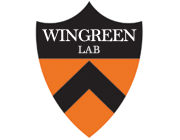Implications of localized charge for human influenza A H1N1 hemagglutinin evolution: Insights from deep mutational scans
Publication Year
2020
Type
Journal Article
Abstract
Seasonal influenza A viruses of humans evolve rapidly due to strong selection pressures from host immune responses, principally on the hemagglutinin (HA) viral surface protein. Based on mouse transmission experiments, a proposed mechanism for immune evasion consists of increased avidity to host cellular receptors, mediated by electrostatic charge interactions with negatively charged cell surfaces. In support of this, the HA charge of the globally circulating H3N2 has increased over time since its pandemic. However, the same trend was not seen in H1N1 HA sequences. This is counter-intuitive, since immune escape due to increased avidity (due itself to an increase in charge) was determined experimentally. Here, we explore whether patterns of local charge of H1N1 HA can explain this discrepancy and thus further associate electrostatic charge with immune escape and viral evolutionary dynamics. Measures of site-wise functional selection and expected charge computed from deep mutational scan data on an early H1N1 HA yield a striking division of residues into three groups, separated by charge. We then explored evolutionary dynamics of these groups from 1918 to 2008. In particular, one group increases in net charge over time and consists of sites that are evolving the fastest, that are closest to the receptor binding site (RBS), and that are exposed to solvent (i.e., on the surface). By contrast, another group decreases in net charge and consists of sites that are further away from the RBS and evolving slower, but also exposed to solvent. The last group consists of those sites in the HA core, with no change in net charge and that evolve very slowly. Thus, there is a group of residues that follows the same trend as seen for the entire H3N2 HA. It is possible that the H1N1 HA is under other biophysical constraints that result in compensatory decreases in charge elsewhere on the protein. Our results implicate localized charge in HA interactions with host cells, and highlight how deep mutational scan data can inform evolutionary hypotheses.
Keywords
Journal
PLoS Comput Biol
Volume
16
Pages
e1007892
Date Published
06/2020
ISBN
1553-734X (Print)1553-734x
Accession Number
32584807
1553-7358Saad-Roy, Chadi MOrcid: 0000-0002-2217-3071Arinaminpathy, NimalanOrcid: 0000-0002-0412-150xWingreen, Ned SOrcid: 0000-0001-7384-2821Levin, Simon AAkey, Joshua MOrcid: 0000-0002-4411-1330Grenfell, Bryan TMR/R015600/1/MRC_/Medical Research Council/United KingdomJournal ArticleResearch Support, N.I.H., ExtramuralResearch Support, Non-U.S. Gov'tResearch Support, U.S. Gov't, Non-P.H.S.2020/06/26PLoS Comput Biol. 2020 Jun 25;16(6):e1007892. doi: 10.1371/journal.pcbi.1007892. eCollection 2020 Jun.

